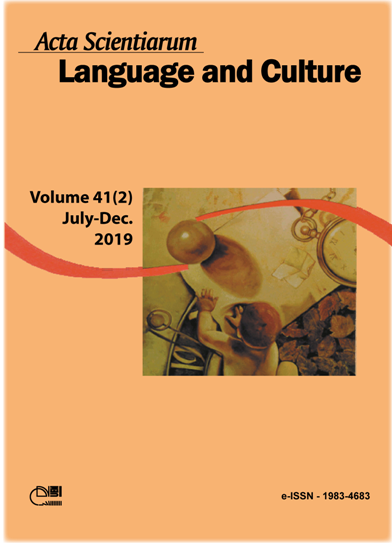Variation in treatment types of the second person in the oral Spanish from Valencia
Abstract
In this research we analyse the linguistic variation in the treatment types of the second person, tú and ‘usted’ through the use of 36 questionnaires taken from PRESEVAL corpus (Proyecto para el Estudio Sociolinguístico del Español de Valencia). The 1.286 occurrences collected, with 1.185 related to the variant tú, and 101 to usted, were statistically analyzed by Goldvarb Program (Sankoff, Tagliamonte, & Smith, 2005) to detect incidence of linguistic motivations (referent type and discourse type), and extra-linguistic (age, sex and schooling). The program selected as significant the following factor groups: referent type, with the indeterminate factor, favoring the variant tú; ii) the age group, the one in which the form tú was prevailing in subjects from the younger age group; iii) type of discourse, in which the abovementioned variant proved to be conditioned by other people’s reported speech. The results, interpreted under socio-functionalist assumptions, have revealed the acting of cognitive principles: markedness, rhetoric expressivity, iconicity, and specialization for generalizing.
Downloads
DECLARATION OF ORIGINALITY AND COPYRIGHTS
I Declare that current article is original and has not been submitted for publication, in part or in whole, to any other national or international journal.
The copyrights belong exclusively to the authors. Published content is licensed under Creative Commons Attribution 4.0 (CC BY 4.0) guidelines, which allows sharing (copy and distribution of the material in any medium or format) and adaptation (remix, transform, and build upon the material) for any purpose, even commercially, under the terms of attribution.
Read this link for further information on how to use CC BY 4.0 properly.




















6.png)









